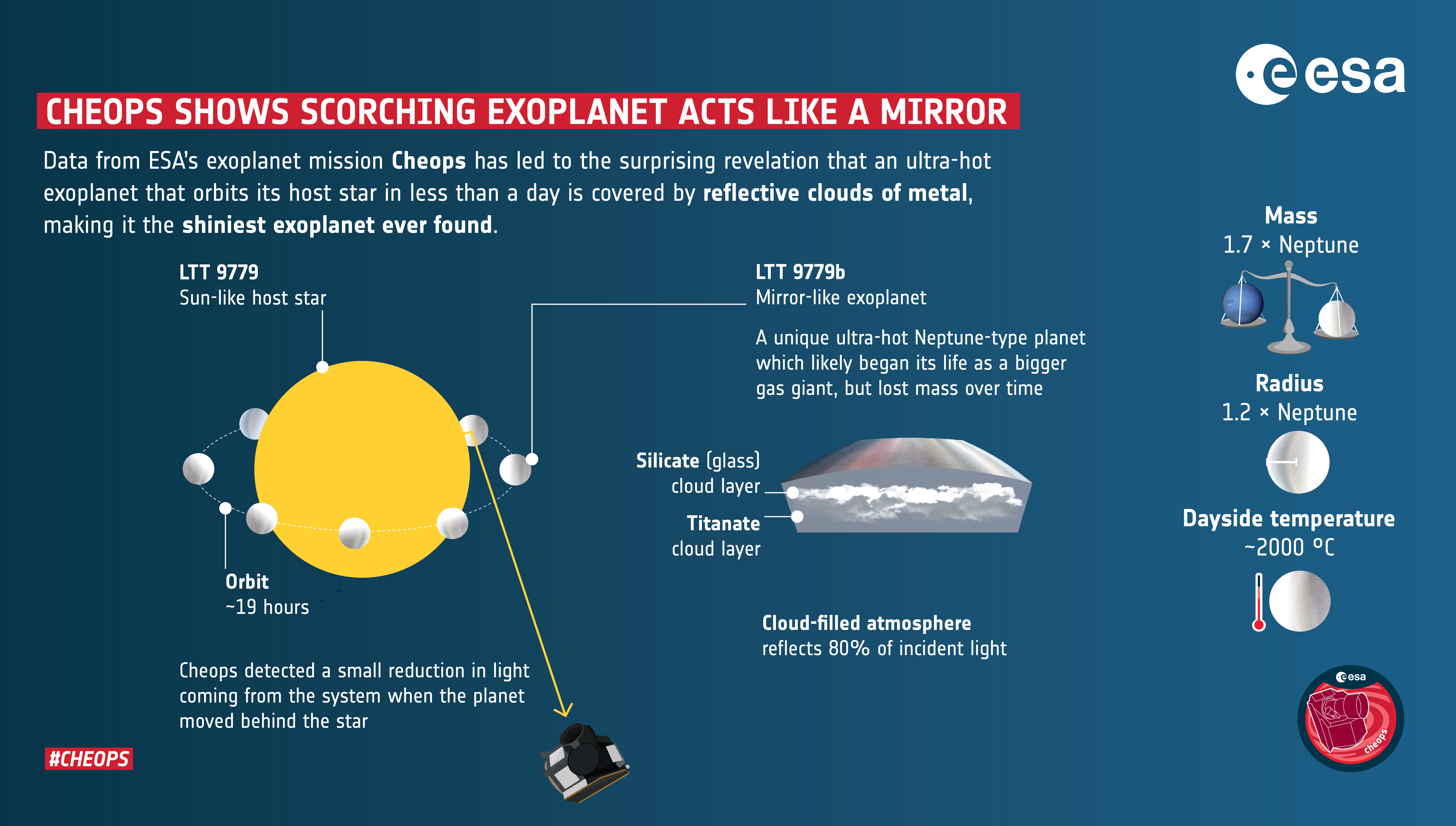Clouds can reflect a lot of sunlight. Earth’s clouds reflect around 30 percent of sunlight back into space while Venus, completely covered in clouds, reflects 75 percent, making it the brightest object in our night sky. Now, astronomers have found an exoplanet that is even shinier. Exoplanet LTT9779b reflects 80 percent of the starlight it receives, making it the shiniest known planet yet, or the largest known “mirror” in the universe.
The quantity that measures how reflective a planet is is called its albedo. The more reflective a surface is, the higher the albedo while dark or rough surfaces absorb light. Most worlds, unless they have a lot of clouds or are covered in shiny white ice, have a low albedo. LTT9779b has an incredible albedo, which is surprising because it shouldn’t have any clouds at all – or an atmosphere.
Discovered using the European Space Agency’s (ESA) exoplanet mission Cheops, the world orbits around a Sun-like star in just 19 hours and is so close that its star-facing side has a temperature estimated to be a scorching 2,000°C (3,600°F). LTT9779b is slightly heavier and slightly larger than Neptune, and its impressive reflectivity is due to the metallic glassy clouds that make up its atmosphere.
“Imagine a burning world, close to its star, with heavy clouds of metals floating aloft, raining down titanium droplets,” co-author James Jenkins, an astronomer at Diego Portales University and CATA (Santiago, Chile), said in a statement.

Glassy metallic clouds have created a mirror effect around this planet.
Image Credit: ESA (Acknowledgement: work performed by ATG under contract for ESA)
This planet is definitely a mystery. There is a significant gap in the number of known Neptune-sized planets orbiting so close to their star. The reason, astronomers believe, is simple. Bigger planets, the “hot Jupiters“, have a gravity high enough to hold onto their atmospheres (most of the time). But the atmospheres of “hot Neptunes” should be blown away, leaving behind a rocky Earth-sized core. This planet might be an exception due to its clouds reflecting away a lot of the energy, giving the planet a fighting chance to keep its gassy envelope.
Its clouds are the other puzzle. At the temperatures experienced by this planet, there shouldn’t be any, even if they are made of glass or metal. And yet, here they are, showing up and showing off, making this distant world all glittery.
Any temperature above 100°C is too hot for clouds of water to form.
“It was really a puzzle until we realised we should think about this cloud formation in the same way as condensation forming in a bathroom after a hot shower,” explained Vivien Parmentier, a researcher at the Observatory of Côte d’Azur (France) and co-author of the study.
“To steam up a bathroom you can either cool the air until water vapour condenses, or you can keep the hot water running until clouds form because the air is so saturated with vapour that it simply can’t hold any more. Similarly, LTT9779 b can form metallic clouds despite being so hot because the atmosphere is oversaturated with silicate and metal vapours.”
The study was published in the journal Astronomy & Astrophysics.
Source Link: Shiniest Planet Ever Discovered Is The Largest Known “Mirror” In The Universe